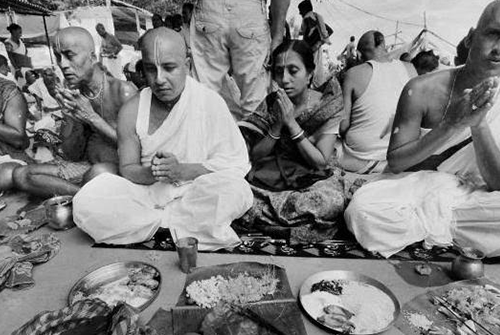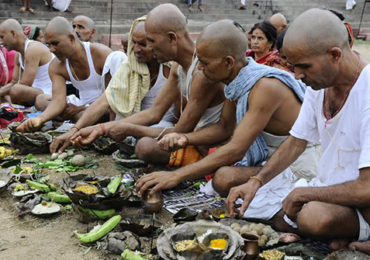Shradh

MEANING OF SHRADDH
Originally, this is a combination of two Sanskrit words, ‘Sat’ meaning truth and ‘Adhar’ meaning basis. So, anything or any act performed with faith and dedication is Shraadh. This ritual is performed to satisfy one’s ancestors. This conveys one’s absolute love towards the ancestors.
IMPORTANCE OF SHRADDH
It has been believed in the Hindu mythology that the soul wanders in various worlds after death. The significance of this great ritual has been mentioned with great details in Agni Puran, Vayu Puran, Garuda Puran etc. Also, according to the Garuda Puran, the soul starts its journey for Yamapuri after 13 days of death. This takes almost 17 days to reach there. After this, the soul travels another eleven months in Yamapuri without any food and water. Then in the twelfth month, the soul reaches the court of Yamaraj. Performing Pind Daan and Tarpaan satisfies the hunger and thirst of the wandering soul. It has been said that Shraadh is a way to repay your debts towards ancestors, and also towards God and Sages. Although it is recommended that these debts be repaid through actions, but performing Shraadh for the same can also be helpful. One can satisfy the ancestors and help them in attaining liberation by performing this ritual. By conducting this ritual, one can slowly move towards God and Sages by the combined support of Vasu meaning aspirations, Rudra meaning dissolution and Aditya meaning radiance or action. One can also gain blessings of God by performing this.


Shraddha rituals consist of following main activities –
- VISHWADEVA STHAPANA
- PIND DAAN
- TARPAAN
- FEEDING THE BRAHMIN
- DONATIONS
The first step in the process of Shraadh puja is Vishwadeva Sthapna which is recommended to be performed under the supervision of a learned priest only. Special care should be taken for making the Puja asan. This should be made up of only silk, wool, blanket, wood, grass and foliage. Remember not to use iron in the asan. During the puja, make sure to use only cow’s milk along with several other items such as curd, barley, peas, ghee, sesame, mustard and millets.

- Vedic Karma Kand
- Rudrabhishek
- Yagya

- Sevasatkar
- Daan
Rishi Rin and DevRin can be implemented in your regular lifestyle, but PitraRin has a set of activities which requires attention and separate time.
APPROPRIATE DAY FOR PERFORMING SHRADDH
Shraadh is performed in the 15 days phase which is observed from the first Tithi of Ashwin Maas till Amavasya (the New Moon day) also known as Sarvapitri Amavasya or Mahalaya Amavasya. Basically, the perfect time to soothe the souls of departed ancestors is Pitra Paksha.
Shraadh is performed on the Lunar Tithi on which the ancestors passed away.
TYPES OF SHRADDH
There are majorly 12 kinds of Shraadhs performed. These are Kaamya, Vriddhi, Nitya, Neimitik, Goshtth, Shurdhyarth, Sapindan, Paarvann, Oupcharik, Saanvatsarik, Deivik and Karmaang.
- For performing Shraadh for maternal grandfather and grandmother (known as Nana-Nani), Pratipada Shradh is considered suitable.
- For people who passed away last year, the fourth day or Chautha Bharani and the fifth day or Bharani Panchmi is allotted.
- For any family member who died unmarried, Panchami Shradh is considered suitable to perform.
- For married women who died before their husbands, Avidha Navami is considered suitable to perform. This is also known as Matrinavami and can also be performed as Shradh of one’s mother.
- For children, Trayodashi Shradh is suitable to perform.
- For people who died sudden death, Ghata Chaturdashi is suitable.
- For the ancestors and forefathers Shraadh, The Mahalaya or Sarvpitri Amavasya is suitable.

